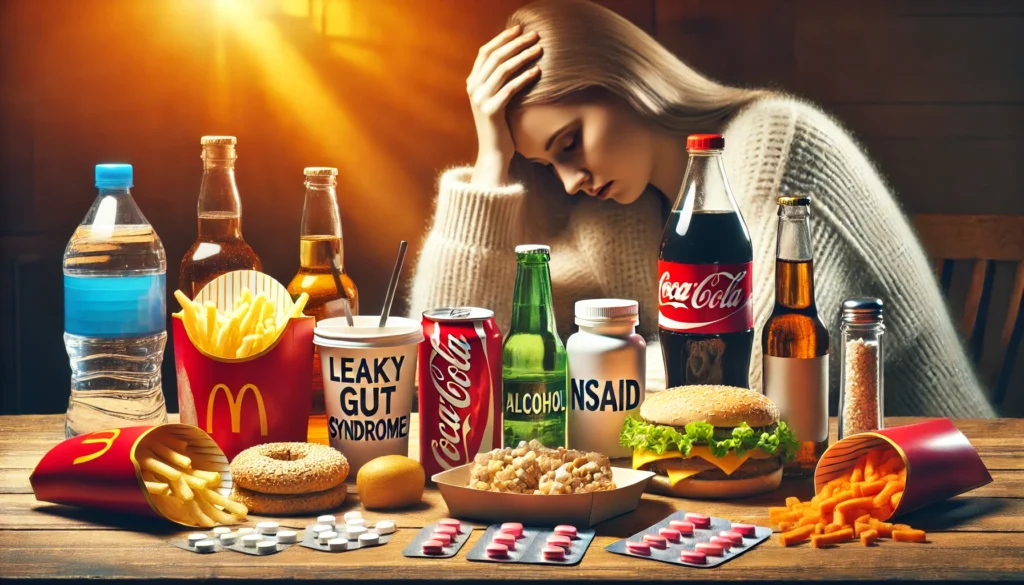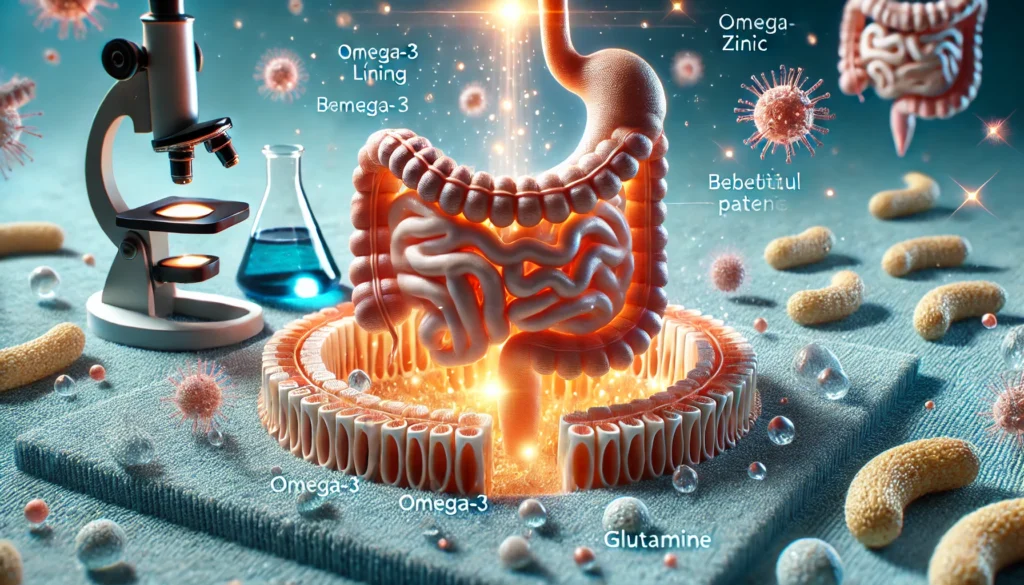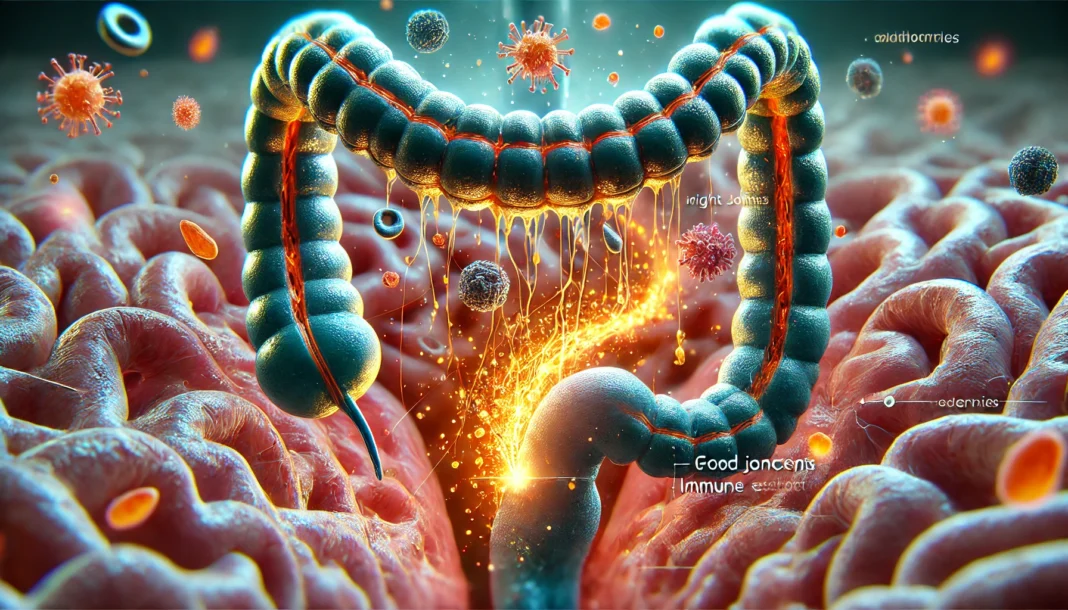Introduction
Leaky gut syndrome—also referred to in the clinical world as increased intestinal permeability—is gaining significant attention as more people struggle with chronic health issues that conventional treatments often fail to address. While still controversial in traditional medical circles, this condition is widely recognized and addressed in functional and integrative medicine practices. It occurs when the tight junctions of the small intestinal lining become compromised, allowing toxins, bacteria, and undigested food particles to escape into the bloodstream. The resulting immune reaction can lead to systemic inflammation, food sensitivities, fatigue, digestive discomfort, and even autoimmune responses.
You may also like: The Science of Gut Repair: How to Heal Leaky Gut Syndrome Naturally with a Proven Gut Healing Diet
For those undergoing treatment, the healing journey can feel long and invisible. That’s why many turn to visual documentation as a form of motivation and validation. Leaky gut before and after pictures serve not just as anecdotal evidence but also as deeply personal records of progress—visibly highlighting improvements in skin clarity, bloating, body composition, energy levels, and overall vitality. These pictures often reflect what lab markers or symptom trackers cannot: a real, physical transformation that reflects internal healing.
This article provides an in-depth look into the mechanisms of leaky gut, how it develops, what healing looks like, and why leaky gut syndrome pictures are powerful tools for patient empowerment. We’ll explore the science behind recovery, provide guidance on what to expect during treatment, and share what kind of results are realistically achievable with the right approach. Whether you are newly diagnosed, mid-way through your healing, or simply curious, this guide offers evidence-based insights paired with real-world experiences.

What Is Leaky Gut Syndrome?
Leaky gut syndrome is a term used to describe a condition where the intestinal lining becomes more permeable than normal, allowing substances that are typically blocked—such as pathogens, undigested food particles, and toxins—to enter the bloodstream. These particles provoke immune responses that can trigger inflammation throughout the body and may contribute to a wide range of chronic conditions.
The gut lining acts as a critical barrier between the external world (via food and drink) and the body’s internal systems. It is composed of epithelial cells linked by tight junction proteins that regulate the absorption of nutrients while keeping harmful elements out. When these tight junctions are disrupted by poor diet, stress, infections, or medications, they become “loose,” permitting the wrong substances to escape into systemic circulation.
Research continues to connect intestinal permeability with conditions like Crohn’s disease, celiac disease, irritable bowel syndrome, autism spectrum disorder, depression, anxiety, skin issues like eczema and psoriasis, and autoimmune conditions including rheumatoid arthritis and multiple sclerosis. Although the term “leaky gut syndrome” is not universally accepted as a medical diagnosis, the underlying phenomenon—intestinal permeability—is both measurable and treatable.

How Leaky Gut Develops: Triggers and Risk Factors
There is no single cause of leaky gut; it’s typically the result of multiple converging factors. One of the primary contributors is poor diet—specifically, consumption of ultra-processed foods, refined sugars, alcohol, and inflammatory food additives. Gluten and casein (a protein found in dairy) are two commonly implicated dietary triggers, especially in sensitive individuals. These proteins can increase the release of zonulin, a protein that modulates tight junctions, leading to their loosening.
Chronic use of medications such as NSAIDs (like ibuprofen), antibiotics, and acid blockers (PPIs) has also been shown to disrupt gut flora and compromise intestinal lining integrity. Antibiotics, for example, can wipe out beneficial gut bacteria, creating an imbalance (dysbiosis) that fuels inflammation and allows harmful microbes to flourish.
Stress plays a particularly insidious role. Psychological stress alters the gut-brain axis, elevating cortisol and suppressing immune regulation within the digestive tract. It slows digestion, decreases blood flow to the intestines, and can damage the mucosal barrier, all of which make the gut more vulnerable to permeability. Sleep deprivation, chronic infections, heavy metal toxicity, and even environmental mold exposure are additional stressors that can erode gut lining over time.
Genetics may predispose individuals to gut disorders, but environmental factors and lifestyle choices are the primary drivers. In most cases, reversing intestinal permeability requires a holistic approach that includes dietary correction, stress reduction, microbial balancing, and nutritional repletion.

Leaky Gut Before and After Pictures: What They Show and Why They Matter
Leaky gut before and after pictures provide a unique lens through which patients can visualize the progression of their healing journey. While not diagnostic tools, these pictures capture subtle yet significant shifts that often occur during recovery—many of which mirror improvements in systemic inflammation, hydration, digestive function, and nutrient absorption.
In “before” pictures, individuals commonly show signs of inflammation such as facial puffiness, bloated midsections, dark under-eye circles, and dull, congested skin. Some may exhibit signs of weight gain from fluid retention, fatigue in facial expressions, or hives and rashes related to immune system activation. As gut health improves, “after” pictures begin to reveal flatter bellies, clearer skin, brighter eyes, and improved posture or energy. These shifts are particularly meaningful for those whose internal symptoms—like fatigue or brain fog—are not always visible to others.
These leaky gut syndrome pictures are often used in functional medicine as tools of motivation. Seeing real, visible improvements helps patients stay consistent with often challenging protocols involving dietary restrictions, supplement regimens, and lifestyle overhauls. While these changes vary by individual, the visual confirmation of internal recovery can offer tremendous emotional encouragement.
Importantly, such pictures also serve as a reminder that healing is not linear. Some people may go weeks without seeing changes, only to suddenly observe a breakthrough in both symptoms and appearance. Others may experience temporary flares due to detoxification or dietary reintroduction but ultimately land at a place of balance and wellness. Before-and-after pictures provide a powerful visual narrative of this evolution.
The Science of Gut Repair: How the Body Heals
The intestinal lining is composed of epithelial cells that regenerate every 3 to 5 days under healthy conditions. This means the gut has a remarkable capacity for healing when given the proper support. However, persistent damage slows this natural renewal process. Gut repair involves several biological mechanisms:
First, inflammation must be brought under control. This is achieved by removing inflammatory foods, healing infections, and calming stress responses. Next, the structural components of the gut lining—tight junction proteins, epithelial cells, and the mucosal layer—need to be nourished. Nutrients like L-glutamine (a primary fuel source for intestinal cells), zinc, vitamin A, and omega-3 fatty acids all contribute to the repair and regeneration of the lining.
Beneficial bacteria also play a major role. These microbes produce short-chain fatty acids like butyrate, which reduce inflammation, enhance mucus production, and tighten junctions between epithelial cells. A diet rich in prebiotic fibers and fermented foods encourages the growth of such bacteria. Supplementation with specific strains of probiotics—such as Lactobacillus rhamnosus GG, Bifidobacterium longum, and Saccharomyces boulardii—can further accelerate microbial balance.
Stress must be addressed as well. Elevated cortisol impairs immune regulation and disrupts the gut barrier. Practices like deep breathing, journaling, meditation, and therapy help activate the parasympathetic nervous system (rest-and-digest mode), which supports optimal digestion and tissue repair. Consistent sleep, hydration, movement, and joyful social connection also promote healing.

Frequently Asked Questions
1. What do leaky gut before and after pictures typically reveal about gut health progress?
These pictures often show visible transformations that reflect systemic reductions in inflammation and improvements in gut integrity. Common changes include the flattening of a distended abdomen, diminished facial puffiness, brighter skin tone, and clearer complexion. These changes are rooted in internal healing processes—such as restored microbial balance, reduced intestinal permeability, and better nutrient absorption. Though not medical proof, the improvements seen in leaky gut before and after pictures often mirror deep shifts that functional practitioners monitor through testing and symptom tracking. They offer visual reassurance that internal work is producing tangible results.
2. How accurate are leaky gut syndrome pictures as indicators of internal healing?
While not medically diagnostic, leaky gut syndrome pictures are remarkably useful as complementary indicators of gut healing. When matched with symptomatic improvements and lab testing, they provide a fuller picture of recovery. For example, an individual with psoriasis may find that visible lesions recede as their gut heals. Or someone with chronic bloating might document a progressively flatter stomach over a few months. These photos can also help identify early warning signs of relapse if inflammation or puffiness starts to return. Used alongside data like zonulin levels, microbial diversity scores, or IgG food sensitivity panels, they become even more insightful.
3. How long does it typically take to see results in leaky gut recovery?
Results vary widely depending on individual health status, protocol adherence, and underlying causes. Some people may notice initial improvements—such as reduced bloating or clearer skin—within 2 to 4 weeks. However, for more systemic or autoimmune-related symptoms, it may take 3 to 6 months or longer to observe lasting changes. Before-and-after pictures taken monthly can help track slow, steady progress that may otherwise go unnoticed. Visual transformations are often gradual but powerful over time, especially when supported by consistent dietary changes, supplementation, and lifestyle interventions.
4. Are there common patterns or symptoms that always improve first in leaky gut healing?
Yes. The first symptoms to improve are often related to digestion and visible inflammation. This includes reduced gas, bloating, constipation or diarrhea, and abdominal discomfort. Many also report a calmer stomach after meals and less urgency to use the bathroom. Next in line are energy levels, mood, and cognitive clarity—especially when systemic inflammation declines and nutrient absorption improves. Skin conditions and joint pain often take longer to resolve but are frequently documented in leaky gut before and after pictures as secondary milestones of internal healing. The sequence of improvements varies, but digestion usually stabilizes first.
5. Can emotional health be affected by leaky gut—and is this visible in pictures?
Absolutely. The gut-brain axis is a well-documented communication pathway between the digestive tract and the central nervous system. When the gut is inflamed, it affects neurotransmitter production—especially serotonin, 90% of which is made in the gut. This can result in anxiety, mood swings, or depression. As the gut heals, many people report feeling mentally sharper, more emotionally resilient, and less anxious. These changes sometimes appear subtly in leaky gut syndrome pictures as improved posture, more relaxed facial expressions, and brighter eyes. Visual cues often reflect the emotional and neurological benefits of gut healing.
6. Should patients track their own leaky gut progress through photos?
Yes, tracking through photos is an effective and motivating strategy. Since many symptoms of leaky gut are subjective—like fatigue or mental fog—visual records provide objective markers of change. Taking photos under consistent conditions (same lighting, posture, time of day) every two to four weeks offers a timeline of transformation. These images, when viewed side-by-side, can be emotionally rewarding and validate the effort invested in healing. Sharing them with healthcare providers can also open up dialogue about treatment effectiveness or the need for protocol adjustments.
7. Are there specific signs to look for in children with possible leaky gut?
Children may show different signs of intestinal permeability than adults. Skin rashes, eczema, dark circles under the eyes, hyperactivity, behavioral changes, and frequent illnesses are common. In leaky gut before and after pictures of children, caregivers often note reduced skin issues, improved posture, and even a more relaxed facial demeanor. Gut-healing protocols adapted for pediatric use—with focus on nutrition, probiotic support, and allergen removal—can be highly effective and safe. Visual tracking of a child’s progress may also help reduce their anxiety or increase cooperation with treatment.
8. Can a healthy-looking individual still have leaky gut?
Yes, outward appearance doesn’t always reflect internal dysfunction. Many individuals with leaky gut appear physically fit or have clear skin but suffer from fatigue, bloating, headaches, anxiety, or food sensitivities. These symptoms may not show up in early-stage leaky gut syndrome pictures but can still impact quality of life significantly. Over time, however, subtle changes—like eye brightness, skin tone, and facial tension—may reveal shifts that signal deeper systemic changes. Healing is holistic, and visual evidence often lags behind internal recovery. Nonetheless, picture tracking can still offer insights over time.
9. What role do diet and lifestyle play in the before-and-after transformation?
Diet and lifestyle are foundational. Healing is virtually impossible without removing irritants like gluten, dairy, sugar, and alcohol, while also incorporating gut-nourishing nutrients and supportive habits. Sleep, movement, stress management, and hydration significantly impact outcomes. Leaky gut before and after pictures are most dramatic in individuals who commit to comprehensive protocols—not just supplements or fad diets. Lifestyle consistency amplifies results and makes healing sustainable. The changes you see externally are reflections of deeply disciplined internal work.
10. Can leaky gut be completely cured?
The intestinal lining is resilient and capable of full regeneration when supported properly. While many people do achieve complete recovery, others with autoimmune conditions or genetic predispositions may require long-term maintenance. Healing leaky gut isn’t a one-time event—it’s a lifestyle. But the gains are worth it: improved energy, clearer skin, enhanced digestion, and a more balanced immune system. Those who stay mindful of dietary triggers and maintain supportive habits often avoid relapse. For most, healing is a journey of empowerment, not limitation, and leaky gut syndrome pictures are powerful milestones along that path.

Conclusion
Leaky gut may start in the gut, but its effects ripple across the entire body. From digestive discomfort and skin issues to mood instability and chronic inflammation, the symptoms can be diverse and deeply disruptive. But healing is not only possible—it’s visible. Through dietary intervention, lifestyle shifts, and therapeutic support, thousands have reclaimed their health and energy. Leaky gut before and after pictures offer visual proof of what many thought was unfixable. They reflect not just physical transformation, but the triumph of commitment, discipline, and hope.
By understanding the science, honoring your body’s signals, and staying consistent with healing strategies, you can repair the gut lining, rebalance your microbiome, and restore vibrant wellness. Whether you’re just beginning or nearing the end of your recovery, remember that your body wants to heal. Every change—internal or external—is worth celebrating. Let your journey, and your photos, be a testimony to what healing truly looks like.
Was this article helpful? Don’t let it stop with you. Share it right now with someone who needs to see it—whether it’s a friend, a colleague, or your whole network. And if staying ahead on this topic matters to you, subscribe to this publication for the most up-to-date information. You’ll get the latest insights delivered straight to you—no searching, no missing out.
Further Reading:
Leaky gut: What is it, and what does it mean for you?
The Leaky Gut: Mechanisms, Measurement and Clinical Implications in Humans



